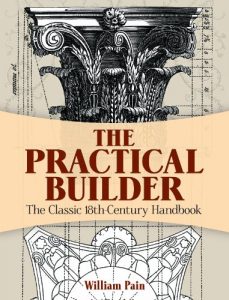This 1774 guidebook for English carpenters was one of the earliest "do-it-yourself" manuals ever published. The builders' manuals and pattern books of the eighteenth and nineteenth centuries offered carpenters and other construction workers important resources for designs and techniques. Those unable to afford an architect's services could feel confident in the good taste of their residence by selecting designs from a pattern book. Employing elementary arithmetic and geometry, the guide's annotated and meticulously rendered engravings depict cross-sections of chimney-pieces, ceilings, cornices, and other architectural details.
William Pain's manual was one of the earliest such works published in the United States. Printed in Philadelphia in 1797, it helped standardize key aspects of Federal architecture and served as a model for construction at George Washington's Mount Vernon home. Reprinted from an original 1774 edition, this is the only available version of a splendid reference for architectural historians and those with an interest in classical architecture.
William Pain's manual was one of the earliest such works published in the United States. Printed in Philadelphia in 1797, it helped standardize key aspects of Federal architecture and served as a model for construction at George Washington's Mount Vernon home. Reprinted from an original 1774 edition, this is the only available version of a splendid reference for architectural historians and those with an interest in classical architecture.






